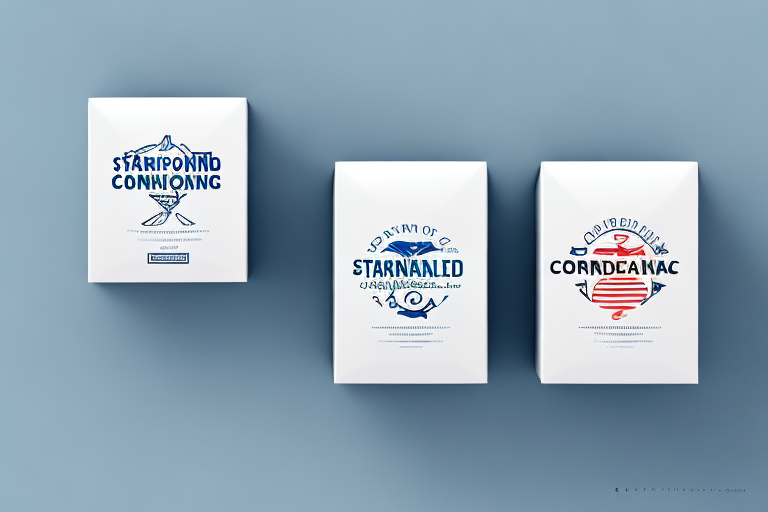Understanding Standard vs. Economy Shipping
Cost and Delivery Time Differences
The primary distinction between standard shipping and economy shipping lies in their cost and delivery timelines. Standard shipping tends to be more expensive but offers faster delivery, typically ranging from 1 to 5 business days. In contrast, economy shipping is more affordable, with delivery times extending from 7 to 14 business days or longer.
Tracking and Insurance Options
With standard shipping, customers often receive comprehensive tracking information, allowing them to monitor their shipments in real-time. Additionally, standard shipping usually offers more robust insurance options to safeguard valuable or fragile items. Economy shipping may provide limited or no tracking capabilities and offer minimal insurance coverage.
Suitable Items for Each Shipping Method
When deciding between standard and economy shipping, it's crucial to consider the nature and value of the items being shipped. Standard shipping is ideal for valuable, fragile, or time-sensitive items, ensuring they arrive safely and promptly. On the other hand, economy shipping is suitable for less valuable or non-urgent items, allowing businesses to reduce shipping costs.
How to Choose the Right Shipping Method
Assessing Your Shipping Needs
Choosing the appropriate shipping method depends on several factors, including delivery speed, cost constraints, and the nature of your products. Evaluate whether your customers prioritize fast delivery or are more sensitive to shipping costs.
Destination Considerations
The shipping destination plays a significant role in your choice. For shipments to remote or international locations, standard shipping might offer better reliability and tracking. Conversely, shipments to urban centers can often be effectively managed with economy shipping.
International Shipping Challenges
When shipping internationally, consider additional factors such as customs regulations, import duties, and potential delays. Standard shipping may provide more comprehensive support in navigating these complexities, ensuring smoother deliveries.
Pros and Cons of Standard Shipping
Advantages
- Faster delivery times, typically within 1-5 business days.
- Enhanced reliability, reducing the risk of delays.
- Comprehensive tracking information.
- Better insurance options for valuable items.
Disadvantages
- Higher cost compared to economy shipping.
- Potential for additional fees based on package size or destination.
Features Included
Standard shipping often comes with additional services such as signature confirmation, insurance for high-value items, and options for expedited or overnight delivery.
Pros and Cons of Economy Shipping
Advantages
- Lower shipping costs, helping businesses save on expenses.
- Ideal for bulk shipments or non-urgent deliveries.
Disadvantages
- Longer delivery times, typically 7-14 business days or more.
- Limited tracking and insurance options.
- Higher risk of delays, especially in remote areas.
When to Upgrade
If your business experiences increased demand for faster delivery or handles more high-value products, upgrading to standard shipping can enhance customer satisfaction and product security.
Comparing Delivery Times and Prices
Delivery Time Statistics
According to [ShipScience Delivery Statistics 2023], standard shipping boasts an average delivery time of 3 business days, while economy shipping averages 10 business days. These figures can vary based on the carrier and destination.
Price Comparison
Shipping costs can vary widely. For example, shipping a 1 lb package domestically may cost around $10-$15 with standard shipping, versus $5-$8 with economy shipping. International shipments may see a larger price differential, with standard shipping potentially costing $50+ compared to economy options at $20-$30.
Choosing the Best Value
Evaluate the balance between cost and delivery time. Use [ShipScience Shipping Calculator] to estimate costs and delivery times based on your specific needs.
Enhancing Your Shipping Strategy
Packaging Tips
- Use appropriate packaging materials to protect items during transit.
- Consider extra padding for fragile products.
- Ensure packages are sealed properly to prevent damage.
Accurate Labeling
Clearly and accurately label all shipments with the correct addresses and contact information. This reduces the risk of lost or misdelivered packages.
Utilizing Tracking and Insurance
Leverage tracking features to monitor shipments and keep customers informed. Investing in insurance can safeguard against potential losses or damages.
Debunking Common Misconceptions
One common myth is that economy shipping is always unreliable. In reality, many economy options offer sufficient reliability for non-urgent shipments when paired with reputable carriers like [FedEx Economy] or [USPS Economy].
Final Considerations
Making an Informed Choice
Assess your business needs, budget constraints, and customer expectations to choose the most suitable shipping method. Balancing cost and delivery speed is key to optimizing your shipping strategy.
Resources and Tools
Utilize tools and resources such as [ShipScience Shipping Tools] to streamline your shipping process and make data-driven decisions.
Conclusion
Choosing between standard and economy shipping depends on multiple factors specific to your business. By understanding the differences, evaluating your needs, and leveraging available resources, you can select the shipping method that best aligns with your objectives, ensuring customer satisfaction and cost efficiency.




















